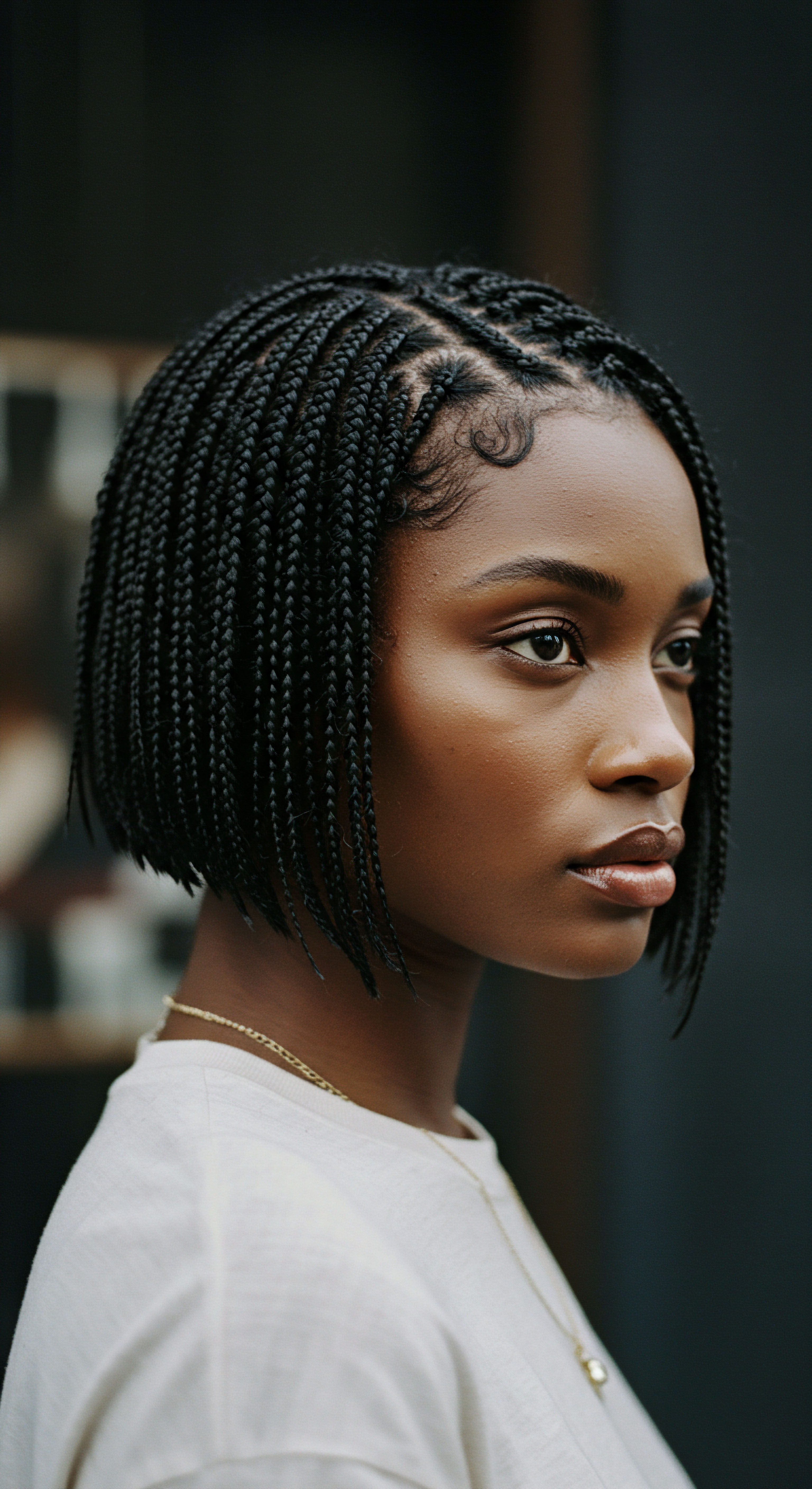
Roots
A quiet inquiry often arises when we consider the enduring vitality of textured hair across generations ❉ how did our ancestors, without the convenience of modern innovations, shield their crowns during the restorative hours of darkness? This exploration begins not with a simple list of items, but with a deeper understanding of the very structure of textured hair, its delicate disposition, and the wisdom that blossomed from this knowledge. For those with coils, kinks, and waves, the night holds a particular paradox.
While slumber promises rejuvenation for the body, it can, unwittingly, invite friction and tension for the hair, leading to tangles, breakage, and a loss of precious moisture. The historical response to this inherent vulnerability was not a mere collection of habits, but a deeply ingrained appreciation for preservation, born from centuries of observation and communal sharing.
The architectural marvel of textured hair, often elliptically shaped and prone to multiple bends along its shaft, presents unique challenges. Unlike straight strands that allow natural oils to glide down easily, the natural twists and turns of coiled hair can hinder this distribution, leaving ends particularly susceptible to dryness. This inherent quality meant that protection was not an afterthought, but a fundamental tenet of daily existence. Understanding the fundamental nature of these strands laid the groundwork for practices that sought to counteract the effects of gravity, movement, and environmental stressors during sleep.

Understanding Hair Anatomy and Its Vulnerability
To truly grasp the ingenuity of historical nighttime hair protection, one must first appreciate the unique physical characteristics of textured hair. The outermost layer, the cuticle, acts as a shield, composed of overlapping scales. In straight hair, these scales lie relatively flat.
However, on a textured strand, these scales may be more raised, especially at the curves of the coil. This slight elevation, while contributing to the hair’s characteristic texture and volume, also means a greater propensity for the cuticles to snag against each other or against rough surfaces.
Consider the nightly tossing and turning, the unconscious movements that accompany rest. Each shift on a pillow, particularly one made of absorbent cotton, can act like fine-grit sandpaper against these delicate cuticle layers. Over time, this mechanical abrasion can lift, chip, and ultimately erode the cuticle, exposing the inner cortex.
Once the cortex is compromised, the hair loses its strength, its ability to retain moisture, and its natural luster. The ancients, through keen observation, understood this silent attrition, recognizing the visual cues of dullness, frizz, and brittleness as indicators of nightly wear.
The intricate structure of textured hair, with its unique bends and raised cuticles, inherently makes it more susceptible to nightly friction and moisture loss.

Hair Classification Systems and Their Relevance to Care
While modern classification systems offer a granular way to describe hair types, historical communities understood the spectrum of textures through direct experience and shared knowledge. From tightly coiled strands to looser waves, the need for protective measures remained a constant, though the specific methods might have adapted to the particularity of the hair. The denser the coil, the more pronounced the need for robust protection, as tighter curls often signify a greater number of twists along the strand, increasing points of vulnerability.
The recognition of hair’s diverse expressions led to a nuanced understanding of its needs. For instance, hair with a more open curl pattern might still benefit from a gentle wrap, while highly compact coils might demand a more comprehensive covering to maintain their integrity. This innate categorization, though informal, guided the selection of materials and techniques used for nighttime preservation, ensuring that each strand received the care it deserved.
- Hair Shaft Morphology ❉ The shape of the hair strand, whether round, oval, or elliptical, dictates its curl pattern and its vulnerability to external forces.
- Cuticle Integrity ❉ The condition of the outermost layer directly impacts the hair’s ability to retain moisture and resist damage from friction.
- Natural Oil Distribution ❉ The winding path of textured hair often prevents natural sebum from reaching the ends, making these sections particularly prone to dryness and breakage.

Ritual
Stepping from the foundational understanding of textured hair, we now consider the intentional actions, the daily and nightly practices that safeguarded these precious strands. These were not merely chores but often acts of reverence, passed down through familial lines, embodying a deep respect for the hair’s role in identity and wellness. The practices surrounding nighttime rest were particularly significant, transforming the act of preparing for sleep into a mindful ritual of preservation. It was a recognition that the night, while a time of rest, could also be a time of unseen wear and tear, and thus, deliberate measures were essential.
The methods employed were varied, reflecting the diverse cultural landscapes from which they sprang, yet a common thread united them ❉ the desire to minimize friction, maintain moisture, and keep the hair organized to prevent tangling. These protective styling techniques, often performed before bedtime, were as much about aesthetic maintenance as they were about long-term hair health. They were practical solutions, refined over centuries, to the universal challenge of preserving textured hair through the hours of slumber.

Protective Styling for Nighttime Rest
The cornerstone of historical nighttime hair protection lay in the art of protective styling. These styles were designed to gather the hair, limiting its exposure to external elements and preventing individual strands from rubbing against surfaces or each other. Braiding, in its myriad forms, stood as a primary method.
From simple three-strand plaits to more intricate cornrows or twists, braids kept hair contained and reduced the surface area exposed to friction. The act of braiding itself was often a communal activity, a time for sharing stories and knowledge, further cementing its place as a valued ritual.
Beyond braids, other techniques included wrapping the hair, often in large sections or even as a single large coil around the head. These methods compressed the hair, keeping it compact and preventing it from splaying out during sleep. The choice of style would often depend on the length and density of the hair, as well as the specific cultural tradition. These styles served a dual purpose ❉ they protected the hair and also set it for the next day, often creating beautiful waves or defined curls upon release.
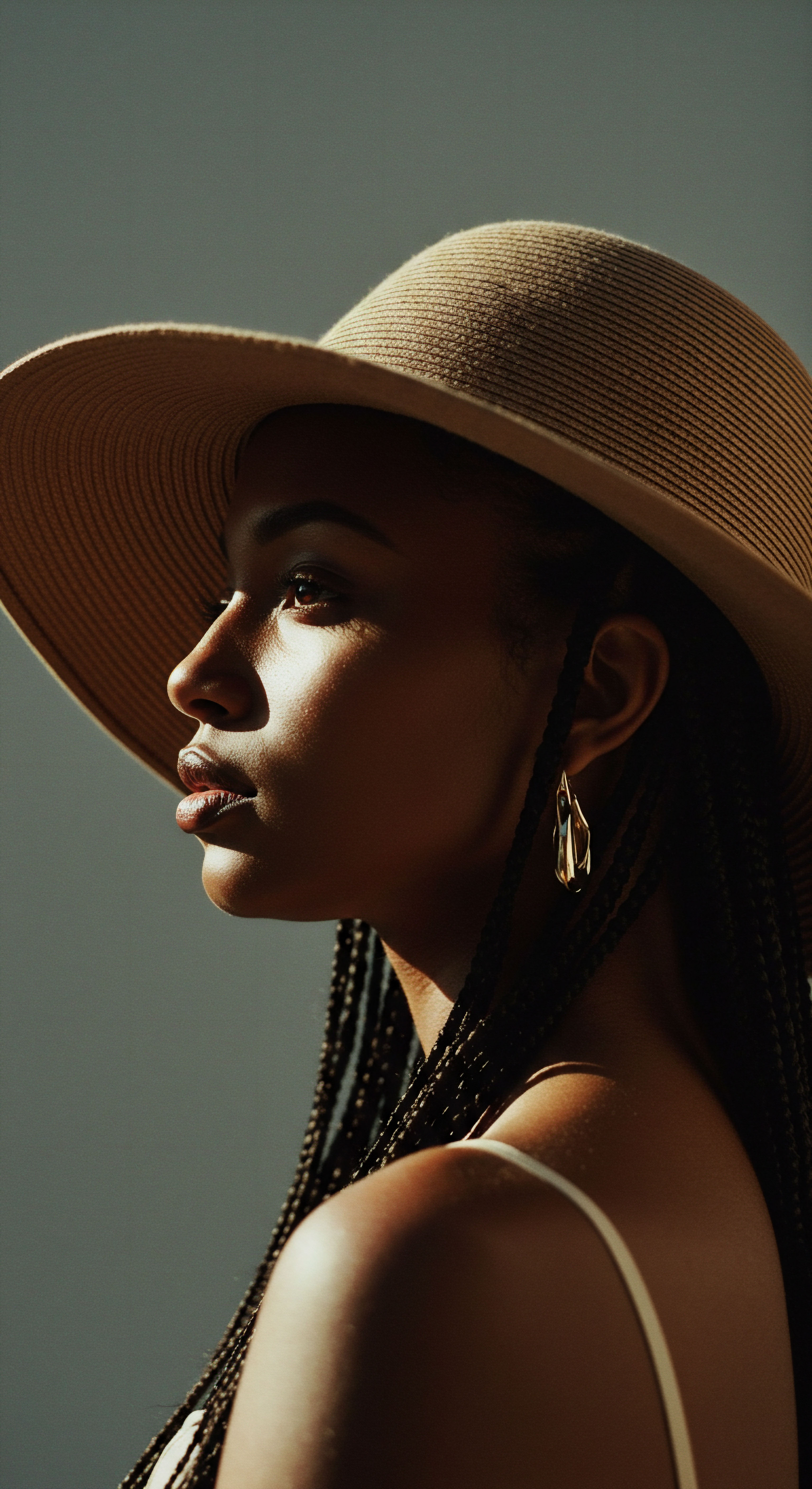
How Did Ancient Cultures Prepare Hair for Sleep?
The preparation of hair for sleep often began with gentle detangling and moisturizing. Natural oils, plant extracts, and butters were applied to the hair, providing a protective barrier and sealing in moisture. This pre-sleep conditioning was vital, as it ensured the hair was pliable and less prone to breakage when manipulated into protective styles. For example, in many West African cultures, shea butter or various plant-based oils were routinely worked into the hair before braiding or wrapping, not only for lubrication but also for their purported nourishing properties.
Once moisturized, the hair would be carefully sectioned and styled. The goal was to create a compact form that would not unravel easily during the night. For very long hair, a single large braid or a series of smaller braids might be coiled into a bun at the crown or nape of the neck, further minimizing contact with the pillow. This careful preparation underscored the understanding that hair, like a delicate fabric, needed mindful handling, especially when preparing for extended periods of potential stress.

The Role of Head Coverings
Beyond styling, head coverings formed an indispensable layer of protection. These coverings acted as a physical barrier between the hair and the sleeping surface, most commonly rough cotton pillows. The materials chosen for these coverings were often smooth, allowing the hair to glide rather than snag. While modern solutions like silk and satin bonnets are widely recognized today, their historical predecessors served the same vital function.
| Material Type Smooth Cloths |
| Historical Usage Various natural fibers like finely woven cotton, linen, or early forms of silk (where available) |
| Hair Protection Benefit Reduced friction, allowed hair to glide, minimized tangling |
| Material Type Animal Skins/Furs |
| Historical Usage Used by some indigenous groups in colder climates, often with the smooth side facing inward |
| Hair Protection Benefit Provided warmth and a degree of smoothness, particularly softer, treated skins |
| Material Type Plant Fibers |
| Historical Usage Woven mats or specific leaves in certain tropical regions |
| Hair Protection Benefit Offered a barrier, though varied in smoothness depending on processing |
| Material Type These materials were selected for their ability to minimize damage and maintain hair integrity during sleep. |
The use of head coverings was not solely about protection; it also held significant cultural and social meaning. Head wraps, scarves, and coverings often signified status, marital status, or spiritual adherence. When worn at night, these same items transitioned into practical tools for preservation. The deliberate act of covering the hair before sleep was a quiet acknowledgment of its value, a practice that transcended mere utility to become a part of a larger daily rhythm of care and respect.
Historical nighttime hair care centered on protective styles and smooth head coverings to mitigate friction and moisture loss during sleep.
The evolution of these practices highlights a continuous effort to adapt and refine methods of hair preservation. Even in environments where resources were scarce, ingenuity prevailed, leading to the development of techniques that maximized the lifespan and vitality of textured hair. This deep-seated knowledge, passed through generations, underscores the enduring legacy of care that continues to shape modern textured hair routines.
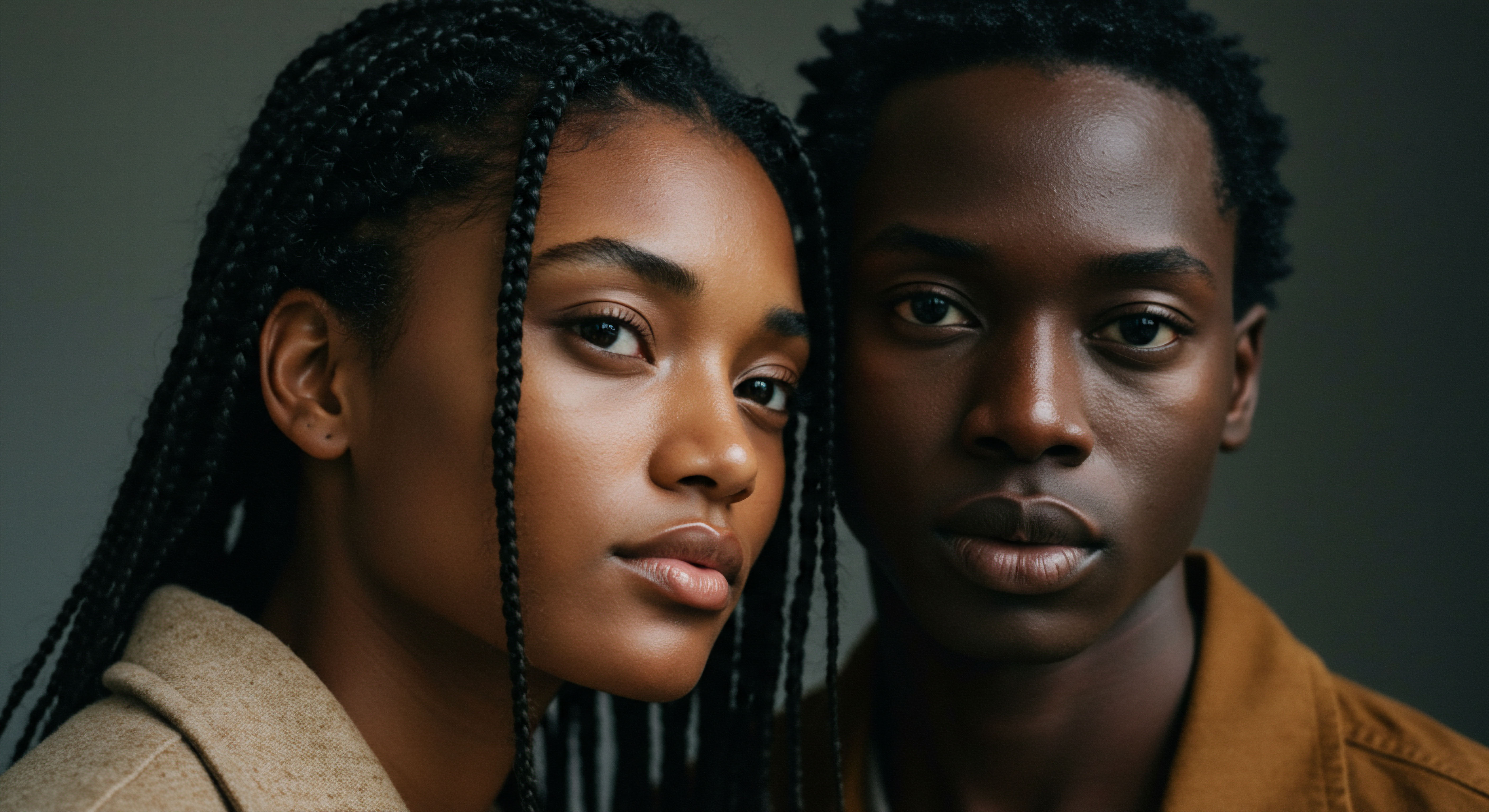
Relay
Moving beyond the observable rituals, we consider the deeper currents that informed and sustained historical textured hair practices, particularly those enacted during the quiet hours of night. This requires a nuanced understanding of how scientific observation, cultural wisdom, and the inherent properties of hair converged to shape routines that protected and preserved. The enduring legacy of these practices speaks to their profound effectiveness, a testament to ancestral knowledge that predates modern trichology. We seek to understand not just what was done, but the intricate ‘why’ behind these seemingly simple acts, recognizing the interplay of biological realities, social imperatives, and environmental factors.
The preservation of textured hair at night was never a singular act, but a multifaceted approach. It acknowledged the hair’s vulnerability to mechanical stress and desiccation, recognizing that the very act of sleep, while restorative for the body, could be detrimental to hair health if not addressed. This understanding led to innovations in materials and techniques that, over time, became deeply embedded within cultural norms and personal regimens.

Biological Imperatives and Cultural Responses
The biological reality of textured hair, with its unique structural characteristics, necessitated specific protective measures. The natural curvature of the hair shaft means that points of contact along the strand are more frequent, making it prone to tangling and breakage when disturbed. Moreover, the open nature of the cuticle in some textured hair types can lead to a faster rate of moisture evaporation, particularly in dry environments or during prolonged periods of exposure.
Historical communities, through empirical observation, developed strategies to counter these biological predispositions. The widespread use of natural emollients like shea butter, coconut oil, or various plant-based infusions before bedtime served to coat the hair shaft, providing a lubricating layer that reduced friction and sealed in moisture. This was a direct, intuitive response to the hair’s need for hydration and a smoother surface for nightly movements.
A compelling illustration of this proactive protection comes from a study examining the impact of sleep surfaces on hair health. While modern studies often focus on synthetic materials, the underlying principle of reducing friction remains constant. Research published in the Journal of Cosmetic Science has shown that hair subjected to repeated friction against a rough surface, such as a cotton pillowcase, experiences significant cuticle damage and protein loss compared to hair on a smoother surface like silk.
This scientific validation underscores the centuries-old wisdom of using smooth head coverings. The study highlighted that even brief periods of friction, accumulated over a lifetime, could contribute to noticeable degradation of hair integrity.
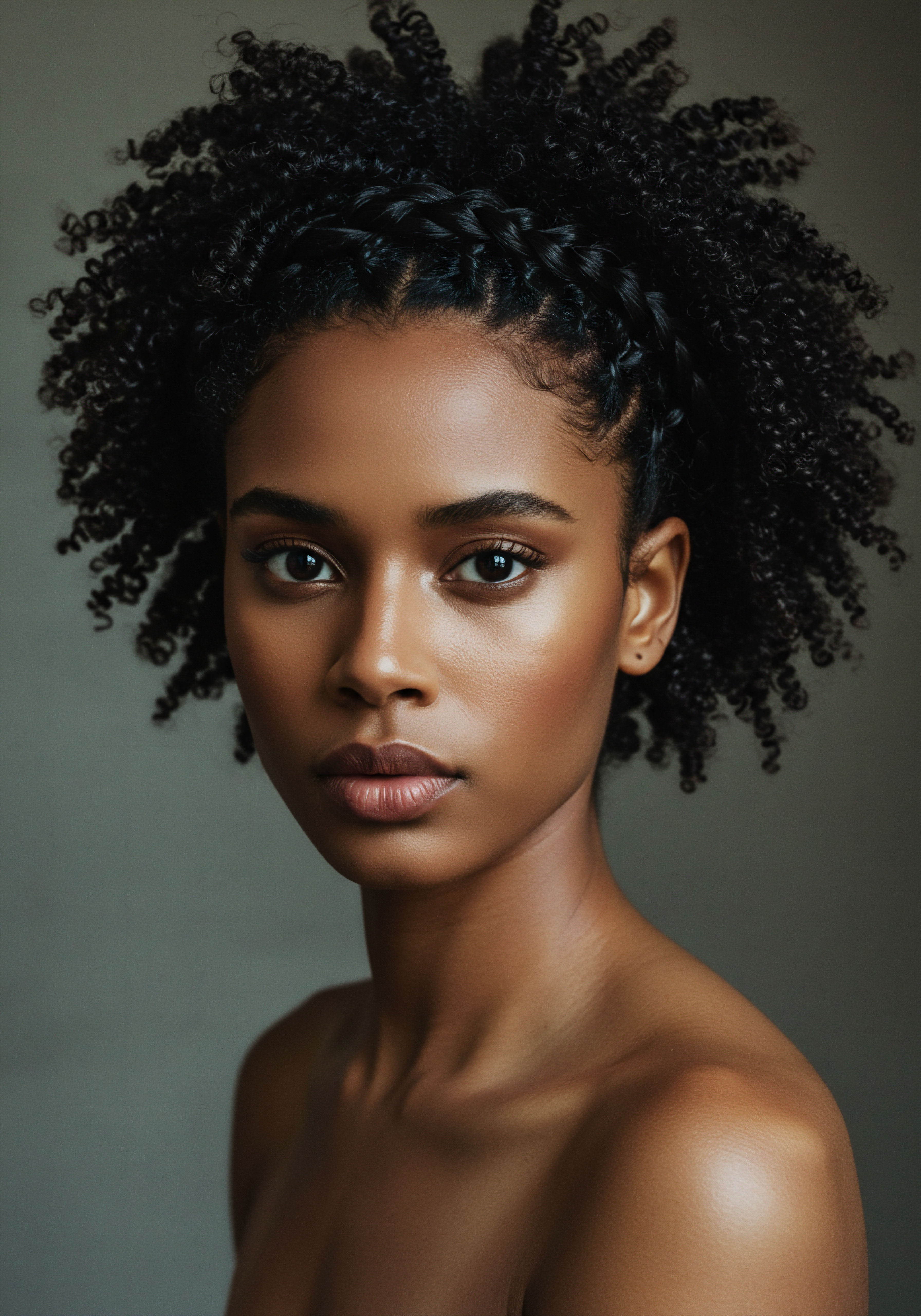
The Societal and Psychological Dimensions of Hair Care
Beyond the purely biological, the protection of textured hair at night also carried significant societal and psychological weight. Hair, for many cultures, was a profound marker of identity, status, and spiritual connection. To allow it to become damaged or unkempt was not merely an aesthetic oversight but could be seen as a disruption of self or communal harmony. This elevated status of hair spurred the development and meticulous adherence to protective rituals.
Consider the collective knowledge held within communities regarding hair care. Elders and experienced individuals passed down techniques, not through written manuals, but through direct instruction and shared practice. This intergenerational transmission of knowledge ensured the continuity and refinement of protective methods. The act of preparing hair for sleep, often involving a mother braiding a child’s hair or women gathering to style each other’s hair, became a moment of bonding and cultural reinforcement.
- Communal Knowledge Sharing ❉ The collective wisdom of generations, passed down through oral traditions and direct demonstration, ensured effective practices endured.
- Cultural Significance of Hair ❉ Hair’s role as a symbol of identity, spirituality, and status elevated its care to a high priority, making protective measures a societal expectation.
- Preventative Well-Being ❉ Nighttime protection was viewed as a preventative measure, safeguarding not just the hair’s physical state but also the individual’s sense of self and presentation.

Did Historical Hair Practices Influence Modern Hair Care?
The enduring legacy of these historical practices is undeniable in contemporary textured hair care. Many modern protective styles, such as braids, twists, and buns, are direct descendants of techniques used for centuries to protect hair during sleep and daily life. The renewed appreciation for silk and satin head coverings and pillowcases is a clear echo of the ancestral understanding of friction reduction. These practices are not simply trends; they are rooted in a deep historical awareness of what textured hair requires to flourish.
Moreover, the holistic approach to hair care, emphasizing natural ingredients, gentle handling, and consistent routines, mirrors the wisdom of past generations. The historical understanding that hair health is intertwined with overall well-being and mindful living continues to resonate. The transition from these ancestral practices to modern applications demonstrates a continuous evolution of knowledge, built upon a foundation laid by those who first observed and adapted to the unique needs of textured strands.
The enduring wisdom of historical nighttime hair protection, rooted in both biological understanding and cultural significance, continues to shape contemporary textured hair care practices.
The resilience of textured hair, often celebrated for its versatility and strength, is also a testament to the meticulous care it has received throughout history. The nightly rituals, though often quiet and personal, collectively contributed to the preservation of this unique hair type, allowing it to withstand the tests of time and environment. This continuity of care, a silent relay of wisdom from one generation to the next, stands as a powerful narrative of adaptability and enduring beauty.
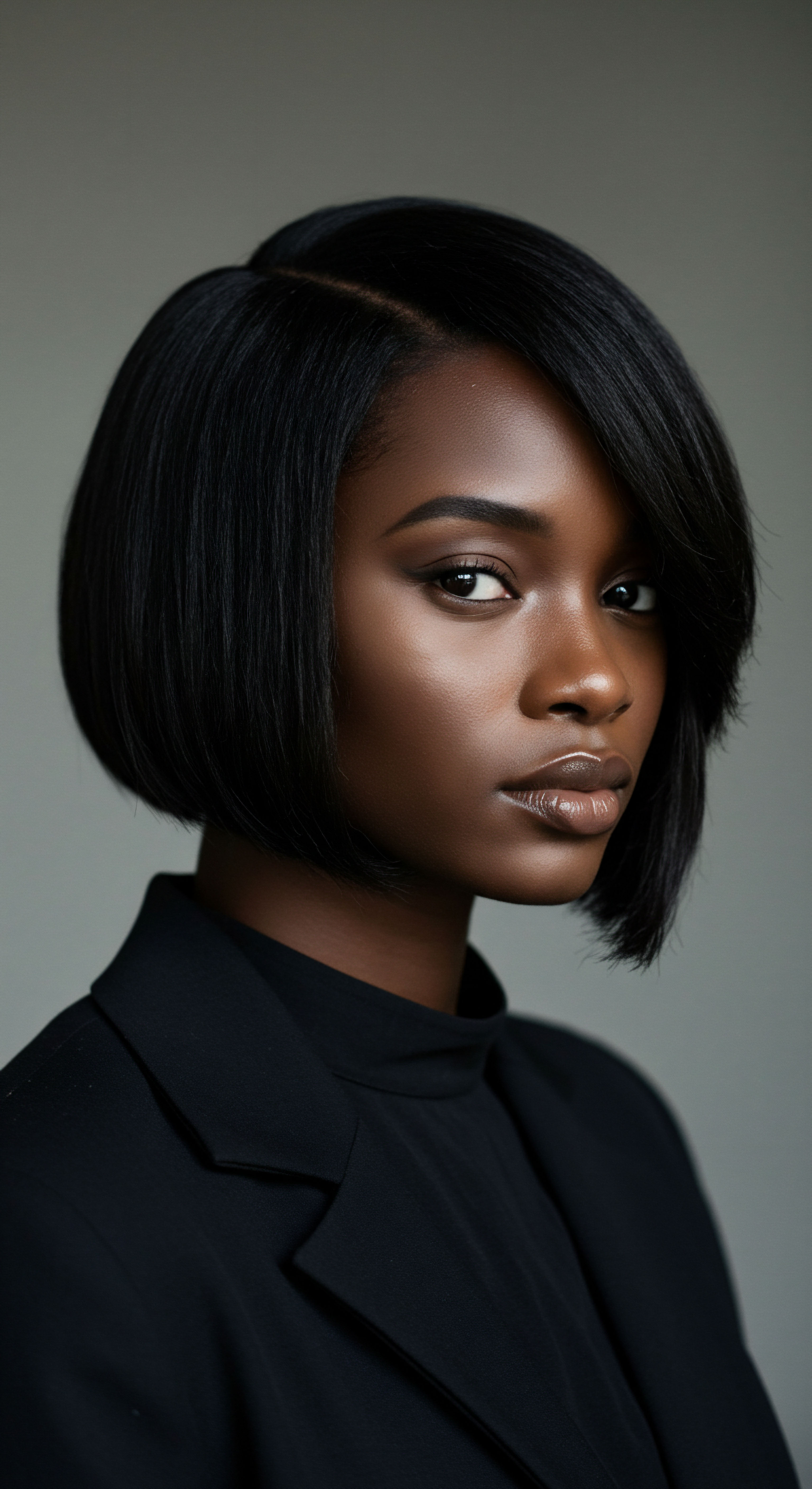
Reflection
As we consider the historical journey of textured hair and its nightly preservation, a profound understanding begins to settle. It becomes clear that these practices were never mere superficial acts, but deeply embedded expressions of care, ingenuity, and cultural resilience. The quiet rituals performed before sleep, from the careful braiding of strands to the gentle draping of protective coverings, speak volumes about the reverence held for hair, not just as an aesthetic adornment, but as a living part of one’s identity and heritage.
This journey through time reveals a continuous thread of wisdom, adapting to environments and evolving through generations, yet always centered on the intrinsic value of these unique strands. The past, in its quiet wisdom, offers a powerful guiding light for our present, reminding us that true care is often found in the simplest, most consistent acts of protection.

References
- Robbins, C. R. (2012). Chemical and Physical Behavior of Human Hair (5th ed.). Springer.
- Bonn, A. (2017). The Hair Book ❉ A Complete Guide to Hair Care. University of California Press.
- Gannaway, G. (2016). Hair Story ❉ Untangling the Roots of Black Hair in America. St. Martin’s Press.
- Byrd, A. & Tharps, L. D. (2014). Hair Story ❉ Untangling the Roots of Black Hair in America. St. Martin’s Press.
- Mercer, K. (1994). Welcome to the Jungle ❉ New Positions in Cultural and Gender Theory. Routledge. (Contains sections relevant to hair as cultural marker).
- Franbourg, A. Hallegot, P. Baltenneck, F. Toutain, C. & Leroy, F. (2003). Current Research on Ethnic Hair. Journal of Cosmetic Science, 54(5), 515-532. (This specific article discusses structural differences and damage susceptibility of ethnic hair, providing a basis for the friction study reference).